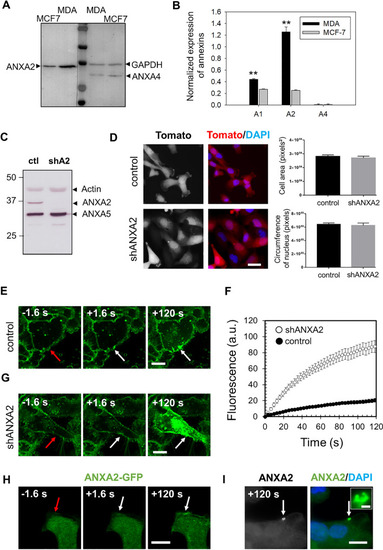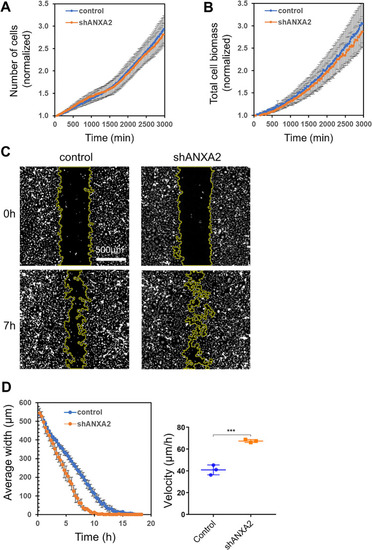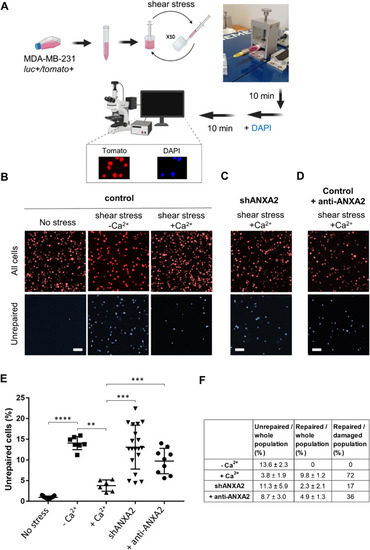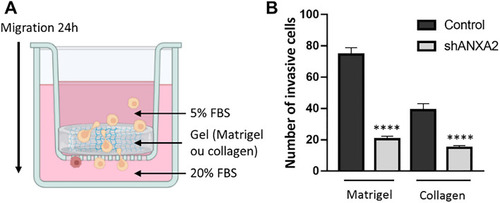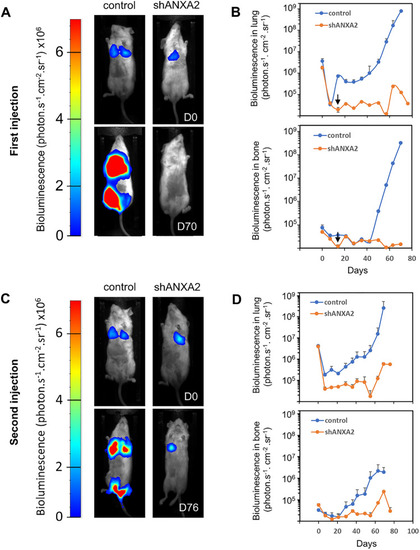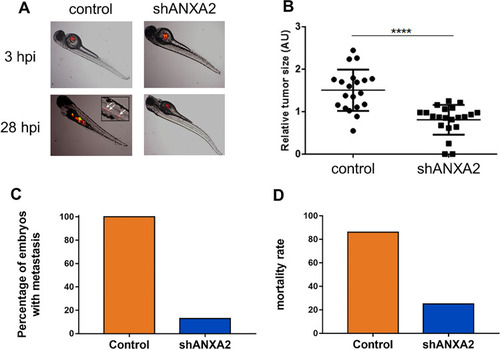- Title
-
Inhibition of the membrane repair protein annexin-A2 prevents tumor invasion and metastasis
- Authors
- Gounou, C., Rouyer, L., Siegfried, G., Harté, E., Bouvet, F., d'Agata, L., Darbo, E., Lefeuvre, M., Derieppe, M.A., Bouton, L., Mélane, M., Chapeau, D., Martineau, J., Prouzet-Mauleon, V., Tan, S., Souleyreau, W., Saltel, F., Argoul, F., Khatib, A.M., Brisson, A.R., Iggo, R., Bouter, A.
- Source
- Full text @ Cell. Mol. Life Sci.
|
Highly expressed in MDA-MB-231 cells, ANXA2 promotes membrane repair. |
|
Proliferation and 2D-migration of MDA-MB-231 cells are independent of ANXA2. |
|
Response of control or shANXA2 MDA-MB-231 cells to membrane injury by shear-stress treatment. |
|
ANXA2 deficiency impairs MDA-MB-231 cell invasion. |
|
Genetic inhibition of ANXA2 prevents tissue colonization of MDA-MB-231 cells in NOD SCID mice. |
|
Genetic inhibition of ANXA2 prevents invasion and metastasis processes of MDA-MB-231 cells in zebrafish. |

